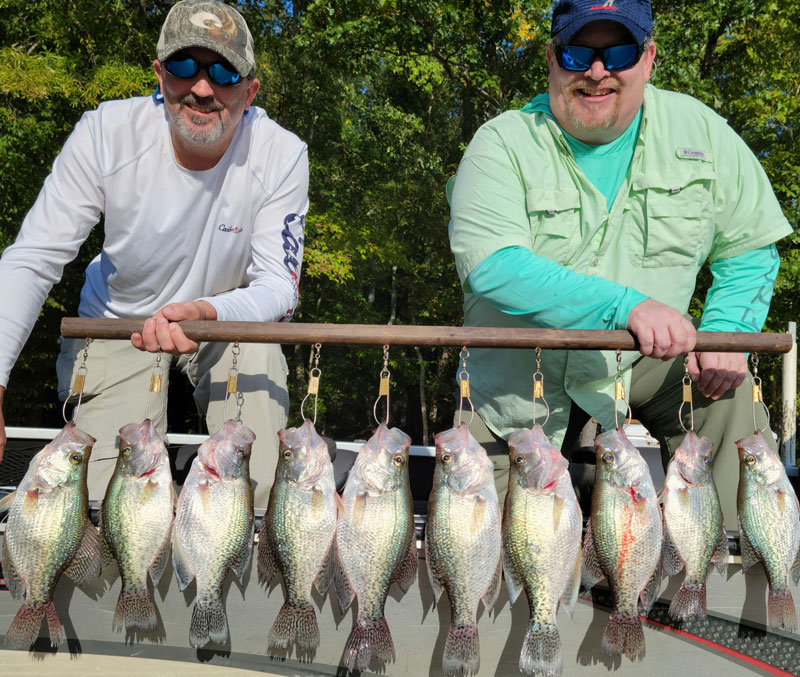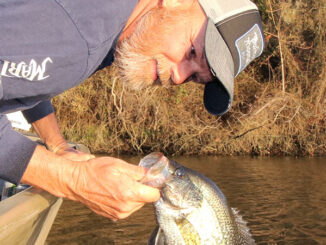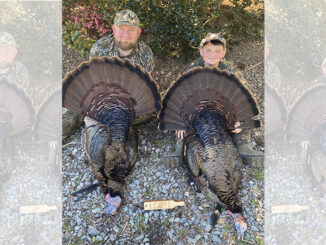
Brush piles are the key to finding winter slabs at Kerr Lake
Keith Wray of Fish Doc Guide Service spends more than 100 days a year on Kerr Lake fishing for crappie. Unless he’s with clients, he sets aside an hour per trip searching for brush piles to add to his staggering number of potential crappie haunts.
Wray, who is from Eden, N.C., knows of more than 600 brush piles, stretching from Grassy Creek to Eastland Creek.
“I’ve put in a fair number of brush piles myself,” said Wray (252-589-9025). “With side-scan units, finding brush planted by others isn’t nearly the impossible task it once was, even on a 50,000-acre lake.”
Wray said coveted brush piles are those composed of willow or sycamore that extend from the bottom in 20 to 25 feet of water to top out 10 feet under the surface. They’re located at steep drops and the edges of flats and points.
The preferred lake level for crappie fishing around brush in the winter is 296 feet above sea level, or about 5 feet below normal pool. A permit from the U.S. Army Corps of Engineers is required to plant brush. Clear water is also best.
Since winter drawdowns can exceed 5 feet, Wray’s awareness of brush piles planted at various depths gives him plenty of alternatives.
Count, backwind
To fish brush piles, Wray employs a casting/countdown method, a vertical presentation or a backwinding technique, all involving light spinning tackle used in conjunction with 1/16- to 1/8-ounce jigs and 3/8-ounce Cotton Cordell C.C. spoons. His color choices for jigs include red/green/yellow and blue ice for clear water and green lime for dingy water; for spoons, silver for clear and gold for dingy water.
Wray uses 4-pound monofilament line to offset clear water and to retain the action of his small baits.
When countdown fishing, Wray determines the number of feet per second his jigs will fall, then counts down until they reach the depth where the crappie are holding. The slow, tantalizing drop catches sluggish, cold-water fish that won’t chase baits. His vertical presentations with jigs or spoons puts the baits right in front of the fish, thanks to his electronics.
Wray doesn’t let his baits free-fall, but follows them down with his rod tip and line to detect the slightest of strikes.
With the Cordell spoon, he employs backwinding. To backwind, Wray measures the amount of line his reel releases in one backward turn and calculating the distance from the rod tip to the spoon. Each backward turn of the reel releases the spoon the calculated distance. By slowly backwinding the spoon, he prevents free fall.
Spoon-fed
The spoon is used for catching crappie residing in deep brush.
“It seemingly takes forever for a light jig to fall 25 feet, so the heavier spoon gets down quicker, though I control its rate of descent by backwinding,” said Wray, who avoids strong winds and current, if possible, to maintain control of his baits.
Wray said crappie become extremely tough to catch when water temperatures drop into the 40-degree range or lower.
While Kerr Lake is excellent for numbers of crappie, it rarely produces 3-pound fish.
“It took me more than five years to catch my first 3-pound crappie,” said Wray. “A 2-pound crappie is a state-citation fish.”




Be the first to comment